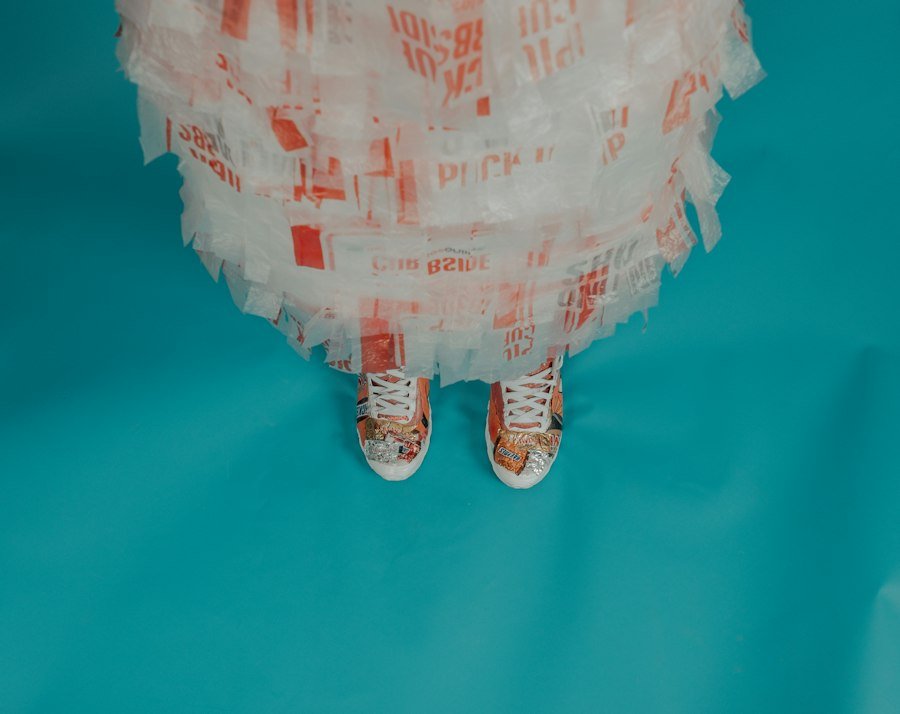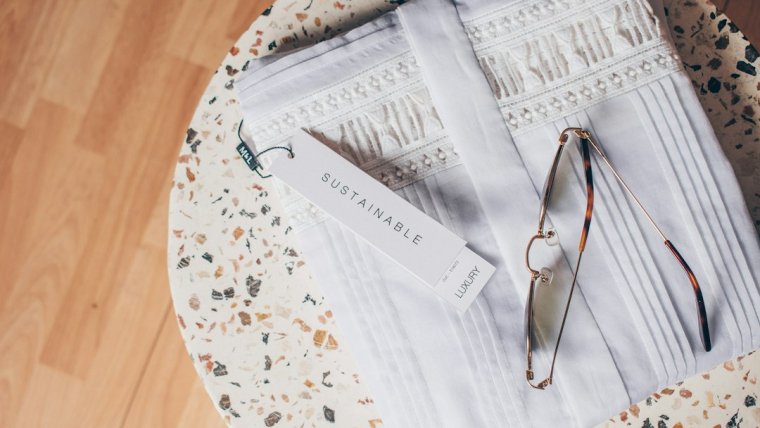In recent years, there has been a growing movement towards sustainable fashion, where ethical and eco-friendly practices are at the forefront of the industry. This intersection of sustainability and high fashion has brought about a new wave of designers and brands that are redefining elegance through their commitment to the environment and social responsibility. Sustainable fashion goes beyond just using eco-friendly materials; it encompasses the entire lifecycle of a garment, from design to production to disposal. This article will explore the rise of sustainable fashion, the eco-friendly fabrics that are changing the game, the leading sustainable fashion brands, the concept of slow fashion, the importance of upcycling and recycling, the impact of sustainable fashion on the industry, and the future of fashion with a sustainable outlook.
The Rise of Sustainable Fashion: A Growing Trend in the Industry
Sustainable fashion is no longer just a niche market; it is becoming a trend in the industry as more consumers demand ethical and eco-friendly products. People are becoming more conscious about the impact their clothing choices have on the environment and society, and they want to support brands that align with their values. This shift in consumer behavior has led to an increase in sustainable fashion brands and a greater emphasis on transparency and accountability within the industry.
One of the reasons behind this trend is the growing awareness of the environmental and social issues caused by fast fashion. Fast fashion refers to the mass production of cheap clothing that is designed to be worn for a short period of time before being discarded. This model has led to excessive waste, pollution, and exploitation of workers in developing countries. As consumers become more educated about these issues, they are seeking out alternatives that are more sustainable and ethical.
Eco-Friendly Fabrics: Materials that are Changing the Game
One of the key components of sustainable fashion is the use of eco-friendly fabrics. These materials have a reduced environmental impact compared to traditional fabrics and often provide improved working conditions for the workers involved in their production. Some of the eco-friendly fabrics that are being used in sustainable fashion include organic cotton, bamboo, and recycled polyester.
Organic cotton is grown without the use of harmful pesticides and synthetic fertilizers, which reduces the environmental impact of cotton production. It also promotes better soil health and water conservation. Bamboo is a highly sustainable material because it grows quickly and requires minimal water and pesticides. It is also naturally antibacterial and hypoallergenic, making it a popular choice for eco-friendly clothing. Recycled polyester is made from post-consumer plastic bottles and other waste materials. By using recycled polyester, designers can reduce their reliance on virgin petroleum-based polyester, which has a high carbon footprint.
These eco-friendly fabrics not only have a positive impact on the environment but also provide benefits for the workers involved in their production. Organic cotton farming promotes fair trade practices and ensures that workers are not exposed to harmful chemicals. Bamboo production provides employment opportunities for local communities, and recycled polyester reduces the demand for new materials, which can help alleviate the pressure on natural resources.
Sustainable Fashion Brands: Leading the Charge in Ethical Fashion
There are several sustainable fashion brands that are leading the charge in ethical fashion and setting an example for the rest of the industry. Stella McCartney is one such brand that has been at the forefront of sustainable fashion for many years. The brand is committed to using only vegetarian materials and has a strong focus on animal welfare. They also prioritize sustainable sourcing and manufacturing practices, such as using organic cotton and recycled materials.
Another brand that is making a difference in the industry is Patagonia. Known for its outdoor clothing and gear, Patagonia has been a pioneer in sustainability since its inception. The brand is committed to reducing its environmental impact through initiatives such as using recycled materials, promoting fair trade practices, and investing in renewable energy. They also encourage their customers to repair and reuse their products rather than buying new ones, which helps reduce waste.
These sustainable fashion brands are not only creating beautiful and high-quality clothing but also challenging the traditional fashion industry by proving that it is possible to be both stylish and sustainable. They are setting an example for other brands and inspiring consumers to make more conscious choices when it comes to their fashion purchases.
Slow Fashion: The Antithesis of Fast Fashion
Slow fashion is the antithesis of fast fashion. It is a movement that promotes a more mindful and sustainable approach to fashion, focusing on quality over quantity and encouraging consumers to invest in timeless pieces that will last for years. Slow fashion emphasizes the importance of craftsmanship, ethical production practices, and fair wages for workers.
One of the key benefits of slow fashion is reduced waste. Fast fashion has created a culture of disposable clothing, where garments are worn only a few times before being discarded. This leads to excessive waste and puts a strain on the environment. Slow fashion encourages consumers to buy less but buy better, investing in high-quality pieces that are made to last. This not only reduces waste but also saves money in the long run, as well-made garments tend to have a longer lifespan.
Another benefit of slow fashion is improved quality. Fast fashion brands often prioritize quantity over quality, resulting in poorly made garments that fall apart after a few wears. Slow fashion brands, on the other hand, focus on craftsmanship and attention to detail, ensuring that each piece is made to the highest standards. This not only means that the garments will last longer but also that they will look and feel better.
Upcycling and Recycling: Giving New Life to Old Clothes

Upcycling and recycling play a crucial role in sustainable fashion by giving new life to old clothes. Upcycling refers to the process of transforming old or discarded materials into something new and valuable, while recycling involves breaking down materials and turning them into new products. Both practices help reduce waste and conserve resources.
Designers are finding innovative ways to upcycle and recycle old clothes, creating unique and one-of-a-kind pieces. One popular technique is patchwork, where different pieces of fabric are sewn together to create a new garment. This not only gives new life to old clothes but also adds a creative and artistic element to the design. Another technique is embellishment, where old clothes are adorned with beads, sequins, or embroidery to create a fresh and updated look.
In addition to upcycling and recycling, some brands are also implementing take-back programs, where customers can return their old clothes to be recycled or repurposed. This helps close the loop on the fashion lifecycle and ensures that garments do not end up in landfills.
Sustainable Fashion on the Runway: Designers Making a Statement
Sustainable fashion is not just limited to small, niche brands; it is also making its way onto the runway through designers who are using fashion as a platform for change. Vivienne Westwood is one such designer who has been a vocal advocate for sustainability in the fashion industry. She has been incorporating eco-friendly materials into her collections for many years and has used her platform to raise awareness about environmental issues.
Mara Hoffman is another designer who is making a statement with her sustainable fashion brand. She is known for her bold prints and vibrant colors, but she also prioritizes ethical production practices and uses eco-friendly materials. Her brand is committed to transparency and provides detailed information about the sustainability of each garment on their website.
These designers are not only creating beautiful and innovative collections but also using their influence to drive change within the industry. They are challenging the status quo and proving that sustainable fashion can be just as stylish and desirable as traditional high fashion.
The Impact of Sustainable Fashion: How it’s Changing the Industry
The rise of sustainable fashion has had a significant impact on the industry, both in terms of increased awareness and demand for ethical and eco-friendly products. Consumers are becoming more educated about the environmental and social issues caused by fast fashion and are seeking out alternatives that align with their values. This has led to a shift in consumer behavior, with more people choosing to support sustainable fashion brands and make conscious choices when it comes to their fashion purchases.
This increased demand for sustainable fashion has forced traditional brands to take notice and make changes to their practices. Many mainstream brands are now incorporating sustainable materials into their collections and implementing initiatives to reduce their environmental impact. While there is still a long way to go, this shift towards sustainability is a step in the right direction.
However, the industry still faces several challenges when it comes to scaling sustainable production. Sustainable materials often come with a higher price tag, making them less accessible to the average consumer. Additionally, the infrastructure for sustainable production is still developing, and there is a need for more investment in research and development of eco-friendly materials and manufacturing processes.
The Future of Fashion: A Sustainable Outlook
The future of fashion is undoubtedly sustainable. As consumers become more educated about the environmental and social issues caused by fast fashion, they are demanding more from the industry. This has led to an increase in sustainable fashion brands and a greater emphasis on transparency and accountability.
Innovations in technology and materials are also driving the future of sustainable fashion. Researchers are developing biodegradable fabrics that can break down naturally at the end of their lifecycle, reducing waste and pollution. Closed-loop production systems are being implemented, where materials can be recycled indefinitely without losing their quality. These innovations have the potential to revolutionize the industry and make sustainability the norm rather than the exception.
Redefining Elegance through Sustainability and High Fashion
In conclusion, sustainability and high fashion are no longer mutually exclusive. The rise of sustainable fashion has brought about a new wave of designers and brands that are redefining elegance through their commitment to the environment and social responsibility. Eco-friendly fabrics, such as organic cotton and recycled polyester, are changing the game by reducing the environmental impact of fashion production. Sustainable fashion brands, like Stella McCartney and Patagonia, are leading the charge in ethical fashion and setting an example for the rest of the industry.
Slow fashion promotes a more mindful and sustainable approach to fashion, focusing on quality over quantity. Upcycling and recycling give new life to old clothes, reducing waste and conserving resources. Sustainable fashion designers are making a statement on the runway and using fashion as a platform for change. The impact of sustainable fashion is changing the industry, with increased awareness and demand for ethical and eco-friendly products.
The future of fashion is a sustainable one, with innovations in technology and materials driving change. Biodegradable fabrics and closed-loop production systems have the potential to revolutionize the industry and make sustainability the norm. It is up to consumers to support sustainable fashion brands and make conscious choices when it comes to their fashion purchases. By doing so, we can redefine elegance through sustainability and high fashion.



